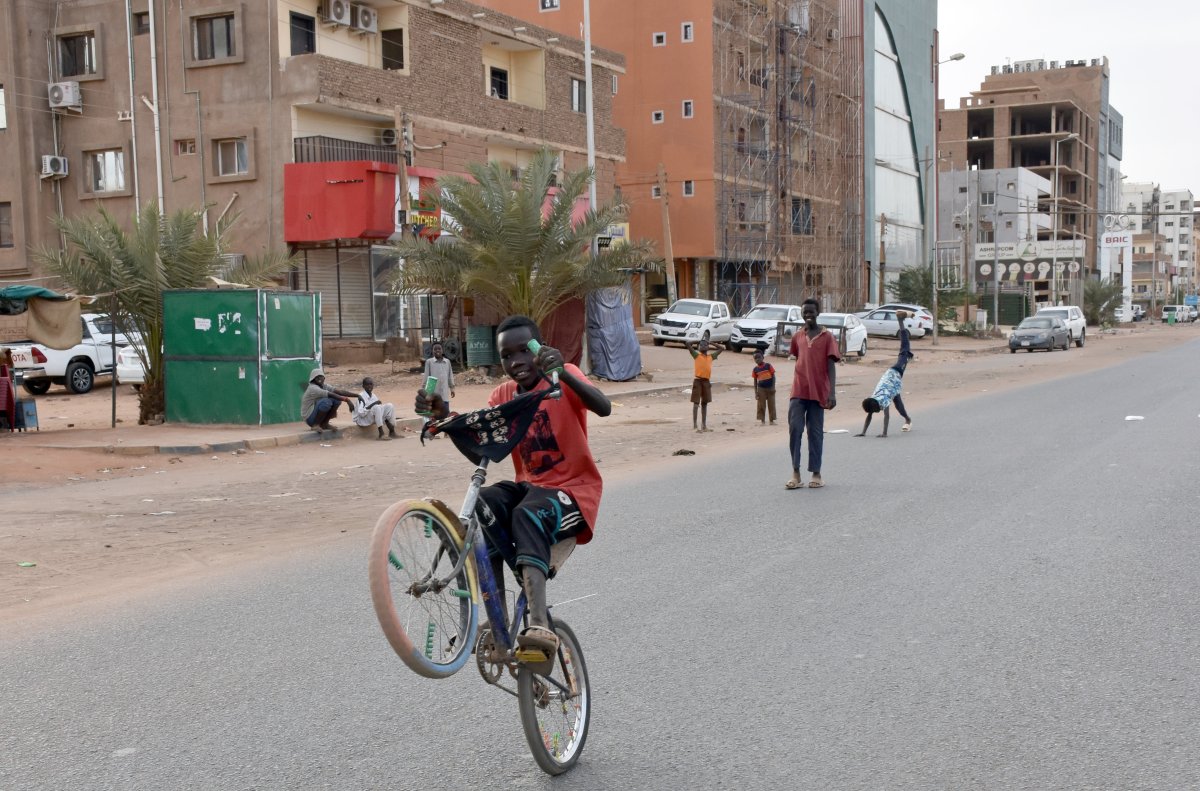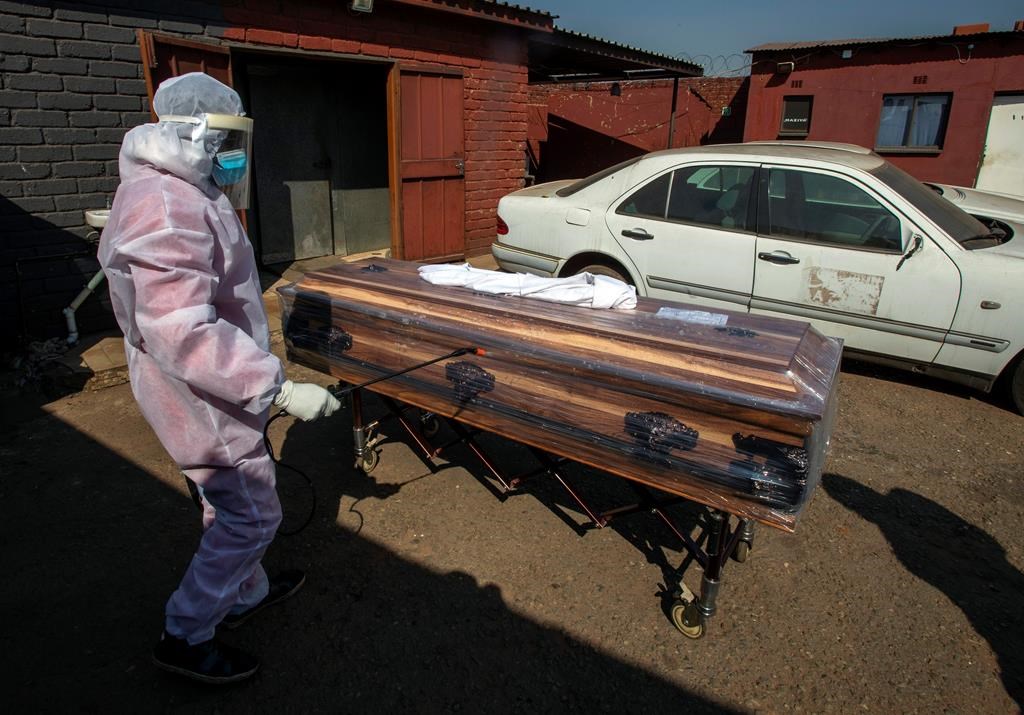A study of COVID-19 cases and deaths in the Sudanese capital of Khartoum suggests that only two to five per cent of the total number of coronavirus deaths have been officially reported.
The report, led by the Imperial College London (ICL) COVID-19 Response Team, says that as of Nov. 20, 477 deaths in Khartoum state were reported to be related to COVID-19.
It estimates the true figure to be between 14,300 and 17,990 higher than that.
The report also estimates that as much as 38 per cent of the population of Khartoum was infected.
Dr. Oliver Watson, an infectious disease modeller at ICL and one of the report’s authors, says scientists cannot analyze deaths in the developing world the same way they do in developed countries because deaths are not always correctly registered and death data is not always accurately gathered.
Read more:
A polio disaster helped shape vaccine safety. Here’s why that matters for the coronavirus
“The data that we’ve been using to estimate the reporting of deaths are two surveys that were conducted within Khartoum. The first was a social media-distributed survey which asked individuals for their previous symptoms, whether they had received a test for COVID-19 and what the outcome of that test was,” Watson said.
“However, that’s a voluntary enrolment in that survey, so we expect that that likely selects for individuals who have been infected, and so it’s likely overestimating the number of infections.”
Watson says that’s why there is a range of between two and five per cent for the estimated level of reported COVID-19 deaths versus actual COVID-19 deaths.
The second source of data was a COVID-19 test survey of 1,135 people, conducted in Khartoum between May 22 and July 5, through the Sudan Field Epidemiology Training Program.
“These are two very different forms of collecting data, and they were collected at two very different places at two different times in the year,” said Watson.
“However, they both suggest the same level of detection of mortality.”
[ Sign up for our Health IQ newsletter for the latest coronavirus updates ]
Demographic difference
The case fatality ratio — the number of deaths per case — would still be much lower than in Canada or Europe.
Most experts agree that demographics and other diseases also play a role.

Children, who don’t follow the ban, are seen cycling in an empty street after a three-week lockdown began as part of coronavirus precautions, on April 18, 2020, in Khartoum, Sudan. (Photo by Omer Erdem/Anadolu Agency via Getty Images).
Dr. Mary Stephen works with the Health Emergency Preparedness and Response Team at the World Health Organization’s (WHO) regional office in Brazzaville, Republic of Congo.
“Our population is young, and then the number of people with co-morbidities, if you want to compare it with Europe and the United States, is relatively lower as well,” said Stephen.
“The two most important factors (affecting COVID-19 deaths) are age and the presence of co-morbidities.”
Stephen says the combination of the young demographics and limited testing resources means authorities have a poor idea of how the disease is spreading.
“Most of our cases have been moderate to mild and a large proportion asymptomatic,” said Stephen.
“So if you find yourself in a country where the testing strategy limits testing to people that have symptoms, and contacts of those that are confirmed with COVID, and maybe people arriving from places with high transmission, then it means that this testing strategy misses out on people that are asymptomatic.”
When accounting for these factors, Watson believes COVID-19 could actually be just as deadly in Khartoum as it is in Ottawa or Paris.
“The case fatality ratio, as it’s based across ages, appears to be similar to case fatality ratios we’re seeing from other hospitals in the world,” Watson said.

“However, what really potentially is then driving that difference we’re seeing within, say, the fatality ratio from somewhere like Khartoum versus ‘high-ranking’ countries that suffered most burden, is really the age demographic, much younger populations, which likely lead to substantially fewer fatalities being observed.”
One factor that may be helping African countries is the list of lessons learned from other epidemics, like Ebola. The virus has killed more than 2,000 people in the Democratic Republic of the Congo since 2018 and killed more than 11,000 people in West Africa between 2013 and 2016.
“First of all, the countries have the experience and the structures on how to get the communities engaged and most of them leverage on these existing structures to try to provide this communication and community engagement services,” said Stephen.
“To the issue of ‘not touching, don’t come close, wash your hands,’ it was not that much of a difficulty. So the community was able to understand and adjust, because they have seen the impact of what Ebola has done.”
Secondary impacts of COVID-19

A funeral home worker in a protective suit disinfects a coffin carrying a woman who died from COVID-19 as they prepare for a funeral in Katlehong, near Johannesburg, South Africa, Tuesday, July 21, 2020. (AP Photo/Themba Hadebe).
On Monday the WHO reminded the world that Africa has been facing even greater challenges for many years.
Its global malaria report said that more than 409,000 people — most of them babies in the poorest parts of Africa — were killed by the disease last year.
The WHO said COVID-19 will almost certainly make things worse in 2020.
“Our estimates are that depending on the level of service disruption (due to COVID-19) … there could be an excess of malaria deaths of somewhere between 20,000 and 100,000 in sub-Saharan Africa, most of them in young children,” Pedro Alonso, director of the WHO’s malaria program, told reporters.
“It’s very likely that excess malaria mortality is larger than the direct COVID mortality.”
Stephen told Global News the effects will be felt far beyond the fight against malaria.
“Antenatal care, the issue of child care, malaria, tuberculosis, HIV/AIDS, chronic non-communicable diseases, hypertension, diabetes,” she listed.
“The continuity of these services have been affected in a number of ways, partly lockdowns, people who couldn’t move. Another reason is the issue of accessibility, because of logistics, a closure of borders.”
The WHO report found there were 229 million malaria cases globally in 2019.
© 2020 Global News, a division of Corus Entertainment Inc.










